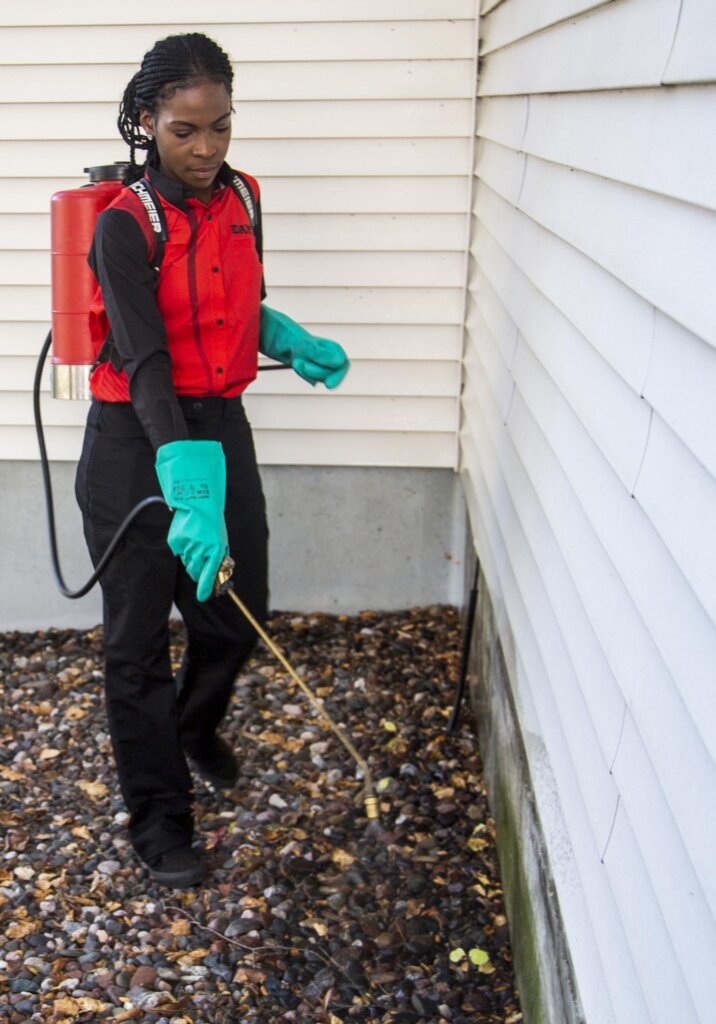A1 Charlotte Pest Control Companies - Your Local Pest Experts
A1 Charlotte Pest Control Companies - Your Local Pest Experts
Blog Article
Bed Insect Therapy Break Down: Contrasting Chemical Vs. Non-Chemical Solutions
In the world of bug control, particularly when handling the relentless problem of bed insects, the selection in between chemical and non-chemical therapy options can be an essential one. Both techniques provide unique advantages and drawbacks, affecting variables such as performance, security considerations, and general cost. By examining the nuanced information of each approach, a clearer understanding of which path to go after in attending to a bed bug invasion can be obtained.
Performance of Chemical Treatments
Chemical therapies for bed bug problems have been commonly identified for their quick and potent effectiveness in removing these bugs. When considering the performance of chemical therapies, it is crucial to recognize that they can offer a extensive and quick service to a bed bug issue. Expert exterminators usually rely on pesticides to target bed pests at various stages of their life cycle, consisting of eggs, adults, and fairies. These chemicals generally work by interfering with the bed insects' nerves, resulting in paralysis and ultimate death.
In addition, chemical therapies have the benefit of using residual results, indicating that they can proceed to remove bed pests also after the preliminary application. This recurring activity is particularly advantageous in combating any kind of possible re-infestations. Furthermore, the rapid action of chemical therapies can bring relief to individuals dealing with severe bed insect invasions, permitting them to restore control of their space promptly.
Security Problems With Chemical Solutions
One critical element that needs mindful consideration when utilizing chemical solutions for bed insect treatment is ensuring the security of passengers and the atmosphere. Exposure to specific chemicals made use of in bed bug therapies can lead to breathing issues, skin irritation, or other adverse responses, specifically in individuals with pre-existing problems or level of sensitivities.
Additionally, the environmental effect of chemical options is an additional considerable consideration. Some chemicals used in bed pest therapies may be hazardous to useful pests, wild animals, and ecological communities if they leach into the dirt or water supply. It is necessary to use chemical treatments carefully, complying with safety standards, and considering less toxic choices to alleviate these risks and guarantee the reliable and safe monitoring of bed pest problems.
Advantages of Non-Chemical Strategies
Taking into consideration the prospective security issues and environmental influence connected with chemical solutions for bed pest treatment, discovering non-chemical techniques provides an encouraging option with a number of distinct benefits. Non-chemical therapies are ecologically pleasant, as they do not contribute to air or water contamination, making them a sustainable option for insect control.
Additionally, non-chemical services can be effective in targeting bed pests, including hard-to-reach locations where chemical therapies might not permeate. Methods ant exterminator such as heat treatment, vacuuming, heavy steam cleaning, and mattress coverings supply thorough obliteration without making use of harmful chemicals. Moreover, non-chemical methods can be less disruptive, needing minimal prep work and permitting quicker reentry into treated locations. Overall, going with non-chemical bed bug treatment techniques not only focuses on security and environmental security however also ensures extensive and efficient pest control.
Limitations of Non-Chemical Treatments

Additionally, non-chemical treatments commonly need numerous applications to accomplish effective obliteration. This can be taxing and might not constantly guarantee full elimination of all bed bugs and their eggs, especially in hard-to-reach or covert locations.
Furthermore, the success of non-chemical therapies heavily counts on appropriate execution and thoroughness, which can be challenging for individuals without expert competence. Inadequate application of non-chemical methods might result in insufficient eradication, causing consistent invasions and the demand for extra therapies.
Therefore, while non-chemical treatments have their advantages, it is important to recognize these limitations and consider them when figuring out the most efficient technique for managing bed bug problems.
Expense Contrast: Chemical Vs. Non-Chemical Options
Provided the limitations linked with non-chemical therapies, a necessary facet to examine in the context of bed insect administration is the cost comparison in between chemical and non-chemical alternatives. In contrast, non-chemical therapies like warmth therapy or vapor can be extra costly, with prices ranging from $1,000 to $6,000 for a whole home. While the initial expense of chemical treatments might appear reduced, multiple therapies may be called for to completely get rid of the problem, potentially enhancing the total expense.
Verdict

Taking into consideration the potential safety and security concerns and environmental effect associated with chemical services for bed pest therapy, exploring non-chemical methods provides a promising choice with numerous distinctive advantages.Provided the restrictions linked with non-chemical treatments, a crucial aspect to examine in the context of bed bug monitoring is the cost comparison between chemical and non-chemical choices. In contrast, non-chemical treatments like warmth therapy or steam can be more costly, with costs ranging from $1,000 to $6,000 for a whole home. While the initial cost of chemical treatments may appear reduced, multiple therapies might be needed to fully eliminate the infestation, possibly increasing the general price.In verdict, when comparing chemical and non-chemical bed insect treatment alternatives, it is important to consider performance, safety and security, benefits, limitations, and price.
Report this page